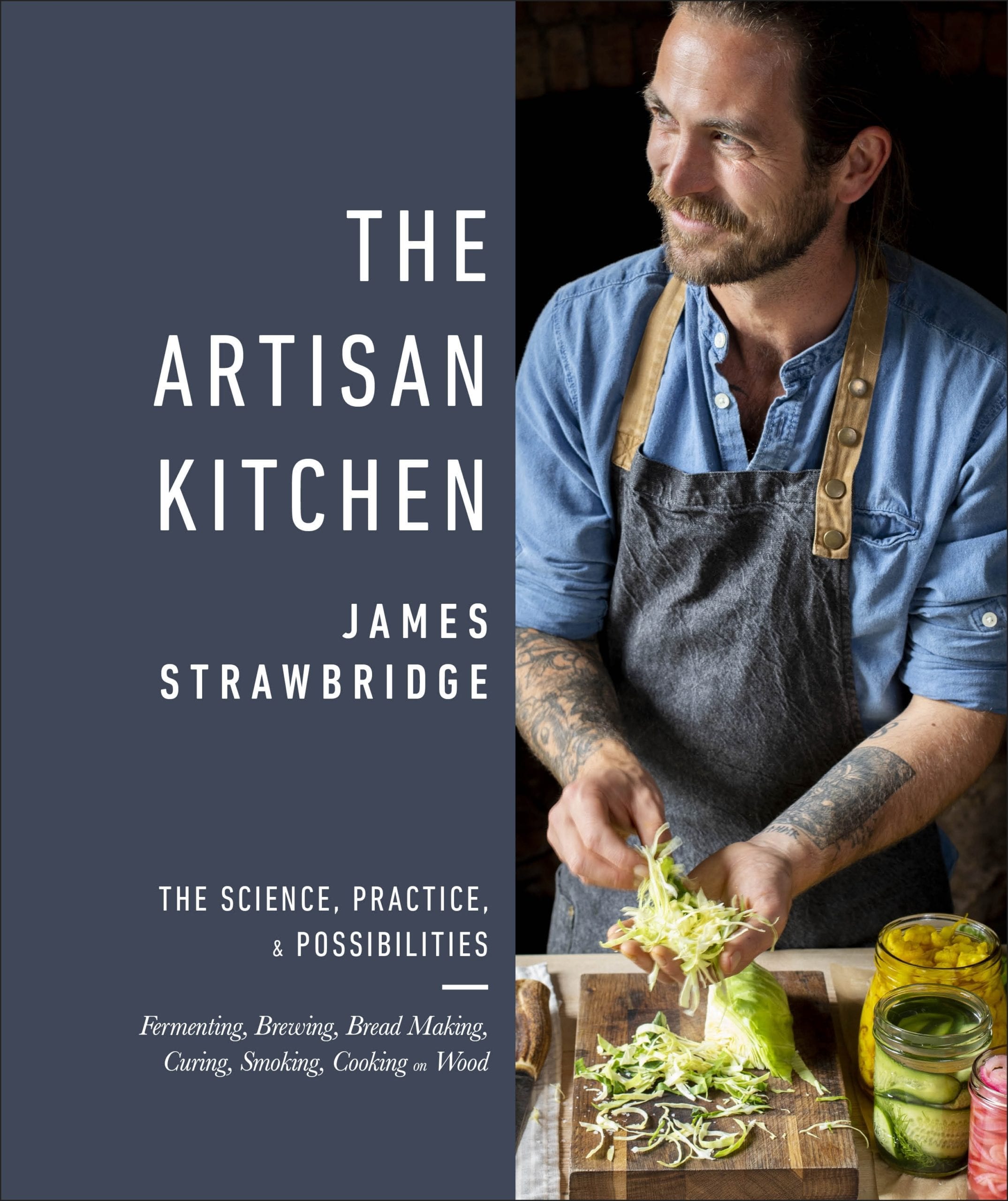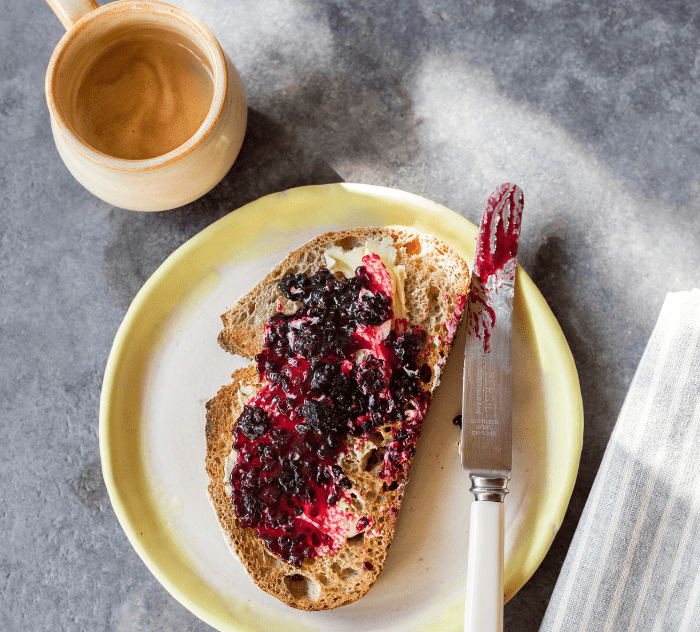Makes – 4 x 290ml (10fl oz) jars
Ingredients:
- 1.8kg (4lb) blackberries
- 1.5kg (3lb 3oz) caster sugar
- 2 lemons
Equipment:
- tea infuser, muslin, or cheesecloth
- heavy-based, stainless-steel preserving pan
- 4 x 290ml (10fl oz) preserving jars, sterilized
- jam funnel (optional)
Blackberry Jam Method
Add the blackberries and sugar to a bowl and stir well. Once the berries are evenly covered, leave to macerate for 1 hour (fig. a).
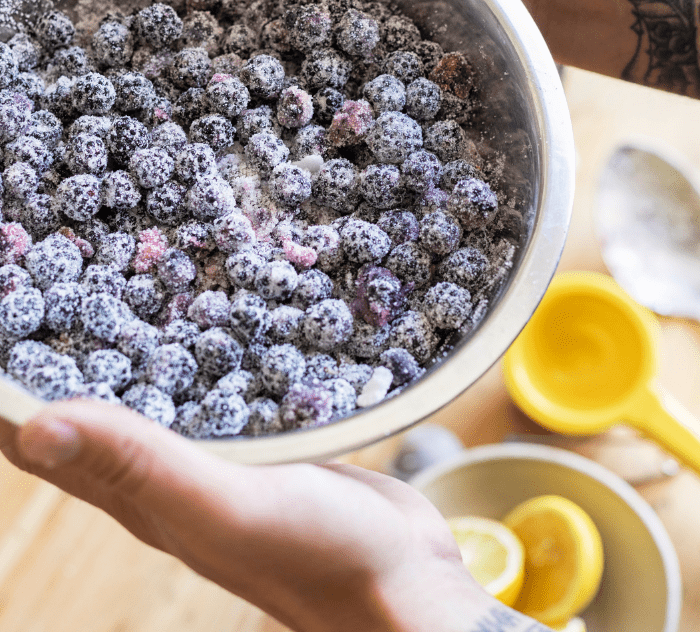
Juice the lemons and retain the pips, which are particularly high in pectin, for use in the jam. Transfer the pips to a tea infuser (fig. b) or bundle them in a muslin or cheesecloth parcel tied with string (so that they are easy to remove later).
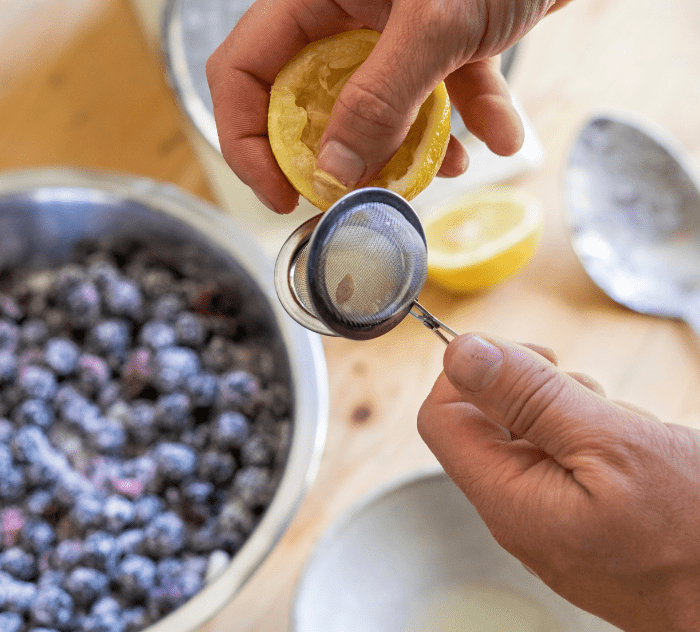
Place the blackberries, sugar, lemon juice, and pips in the preserving pan, bring to a rolling boil, and cook for 15 minutes.
Test whether the jam has reached setting point (see Expert Tips, bottom). If it hasn’t, continue to cook and test again every 5–10 minutes. When it has reached setting point, remove the pips and transfer the jam to jars – use a funnel for ease if you have one. Top each filled jar with a disc of baking parchment, then seal and label. Keep in a cool, dark cupboard for 6–12 months. Once opened, keep refrigerated and use within 2–4 weeks.
Expert Tips:
- Ensure all jam-making equipment is sterilized before you start: plunge jam funnels, spoons, pans, and jars into boiling water, then dry them in a warm oven (see pp.8–9).
- There are various ways to figure out when your jam has reached setting point: if using a sugar thermometer, your jam should be 104–105°C (219–222°F); alternatively, dip a wooden spoon into the jam until fully coated, then allow to cool a little – the jam should slide slowly down the spoon and not drop o unless firmly shaken; or use the “wrinkle test” – spoon some jam onto a chilled plate and allow to cool. When you run your finger through it, you should make wrinkles in the jam, leaving a clear track behind (fig. c).
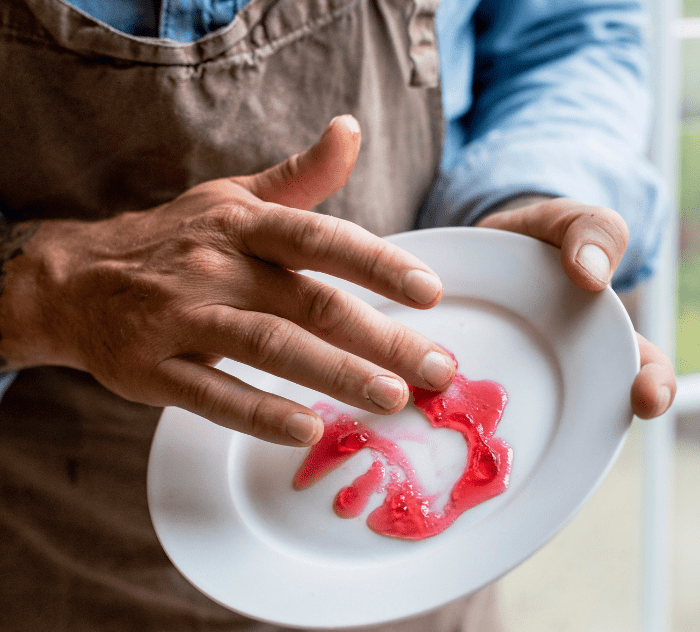
Recipes extracted from The Artisan Kitchen by James Strawbridge, Published by DK Books, RRP $49.99 AUD/ $55 NZD
